Volcanoes of Mars: The Biggest Volcanoes Discovered on the Red Planet
19th Mar 2024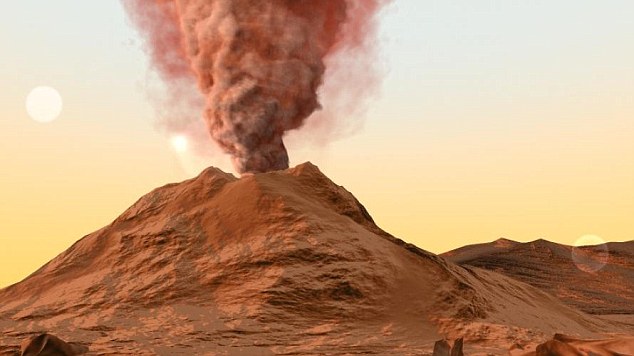
A huge discovery was revealed at the 55th Lunar and Planetary Science Conference where scientists disclosed the identification of a colossal volcano named the Noctis volcano. This new volcano is located in the Tharsis volcanic province on Mars. Scientists were not able to detect this volcano previously despite repeated attempts at imaging it by spacecrafts since 1971.
This is a new potential site for future exploration, and the detection of a possible glacier within the volcano’s vicinity means that future robotic and human missions could potentially extract water from this region. This is not the first volcano discovered on Mars; beyond the Noctis volcano, there are other previously identified ones as well.
Here are some of the biggest volcanoes discovered on Mars until now.
The Noctis Volcano
The recently discovered Noctis Volcano is located south of Mars’ equator in the Easter Noctis Labyrinthus near the colossal Valles Marineris canyon system. It spans 450 kilometers in width and over 9000 meters in height.
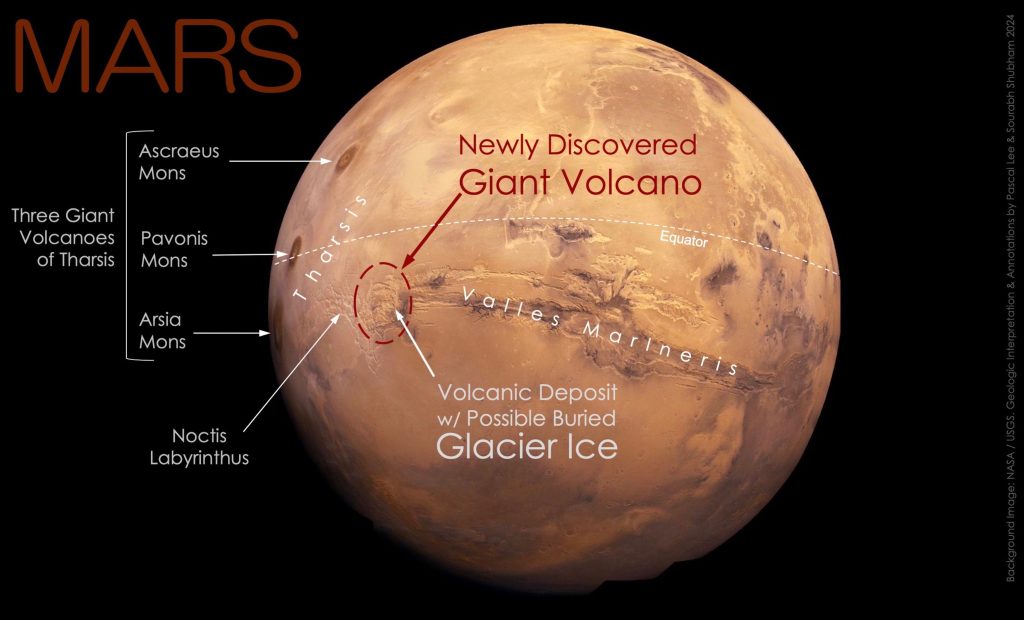
This volcano’s presence is marked by various features, including a caldera remnant, mineral formations, and lava flows. The central summit region is marked by elevated mesas that form an arc that suggests a once-active vent and past volcanic activity.
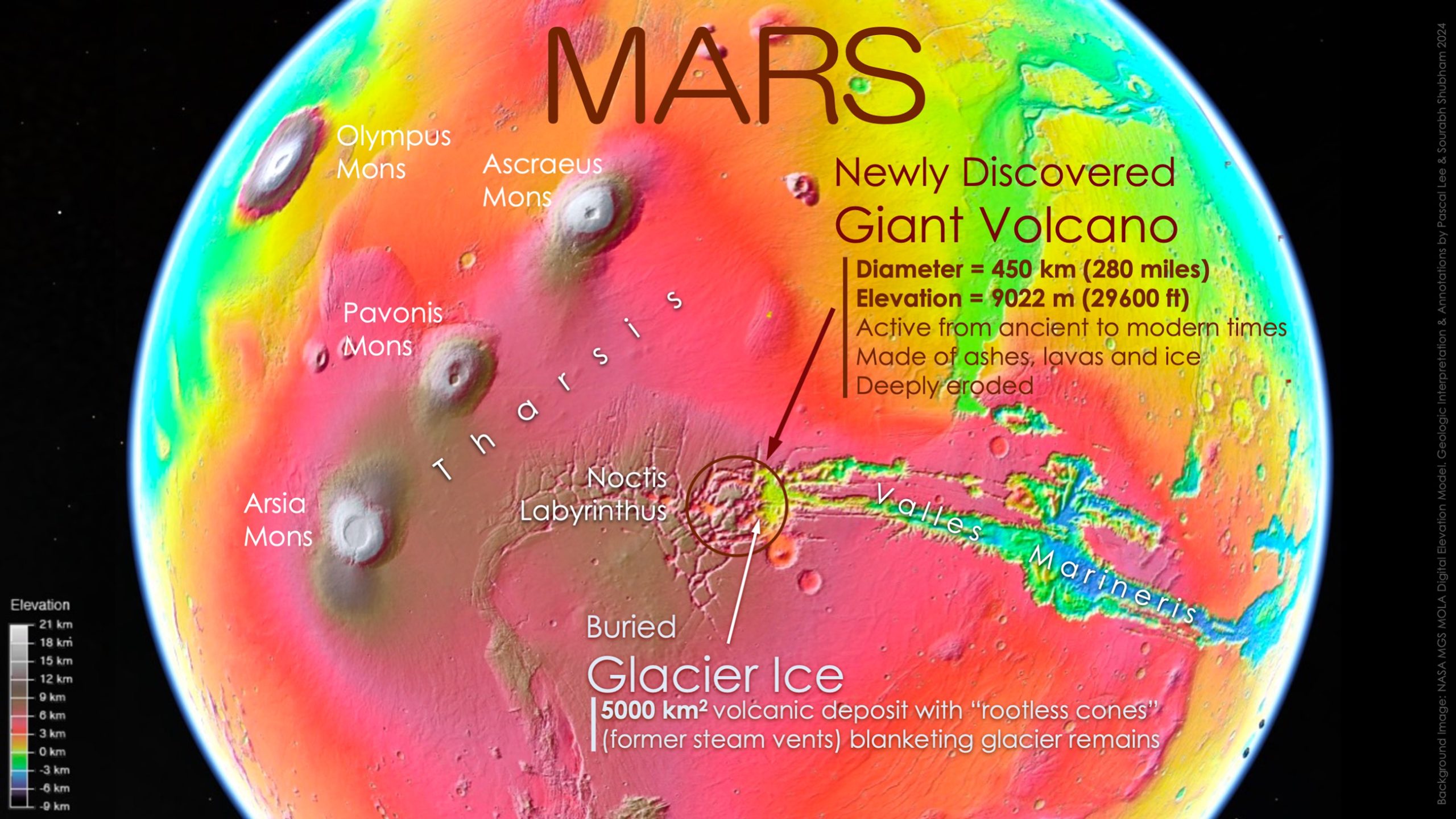
Topographic map showing the iconic location of the Noctis volcano between the largest volcanic and canyon provinces on Mars. Credit: Background image: NASA Mars Global Surveyor (MGS) Mars Orbiter Laser Altimeter (MOLA) digital elevation model. Geologic interpretation & annotations by Pascal Lee and Sourabh Shubham 2024).
Olympus Mons
Olympus Mons is the tallest volcano not just on Mars but in the entire solar system, dominating the geography of the region it is located in. The volcano is approximately 22 kilometers high and covers an area about the same size as the state of Arizona. The sloping slides and massive caldera give it a unique look, similar to shield volcanoes on Earth like the Mauna Loa. The caldera alone measures about 80 kilometers and suggests a long history of previous volcanic activity on the planet.
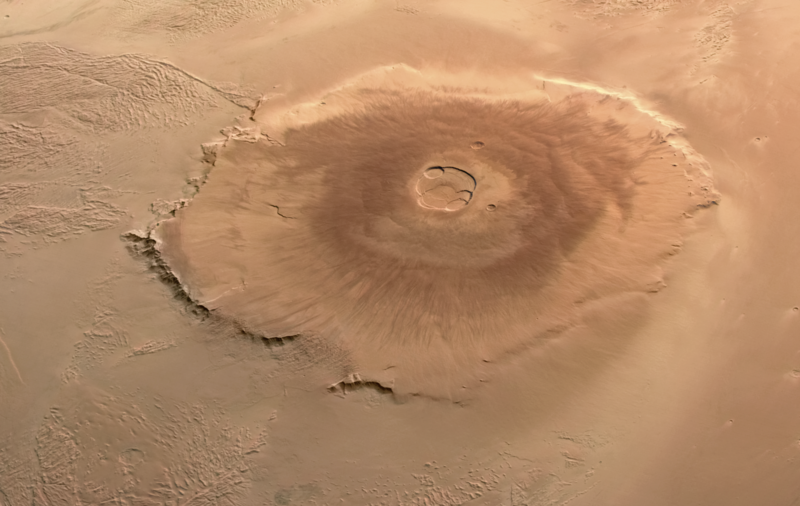
Olympus is Mars’s tallest volcano and its tallest planetary mountain. It is about two and a half times Mount Everest’s height above sea level. Credit: ESA
The Arsia Mons is located near the Martian equator and is one of the largest volcanoes on the planet. It is approximately 14 kilometers high and 115 kilometers wide, surrounded by fissures and several collapsed pits. Its features suggest a violent past with explosive eruptions and extensive lava flows in its region. Situated in the Tharsis Montes region, Arsia Mons neighbors two more prominent volcanoes, Ascraeus Mons and Pavonis Mons, forming a trio of volcanic giants near Olympus Mons.
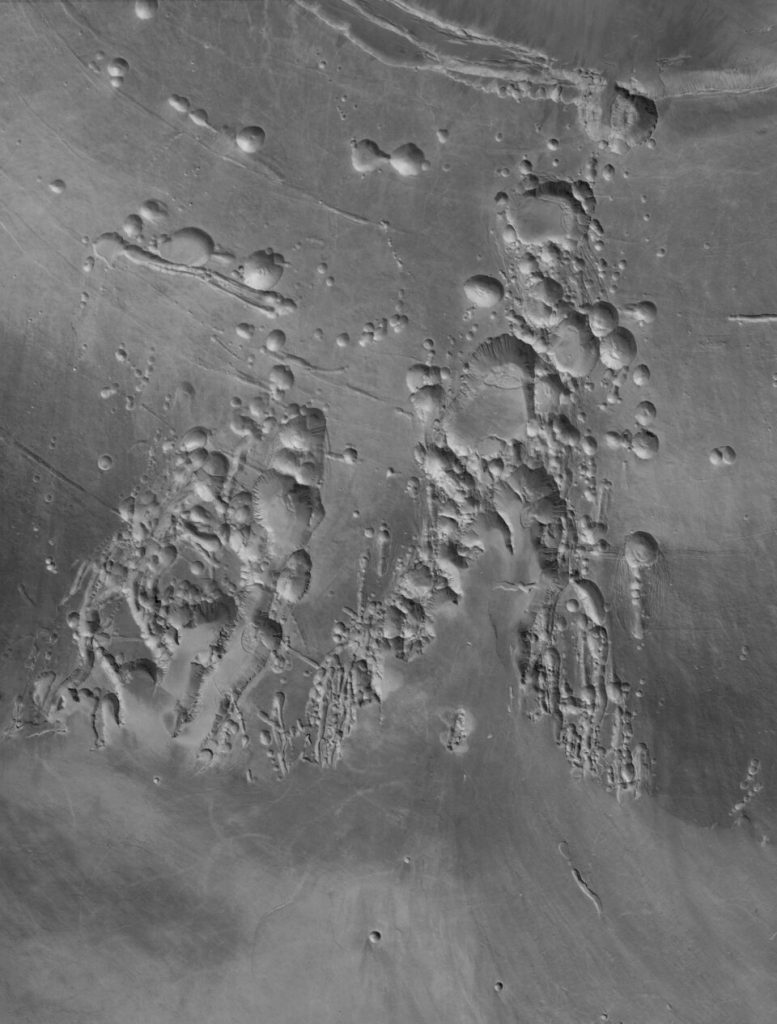
Credit: European Space Agency
Elysium Mons
Another volcano near the Martian equator in the Elysium Planitia region, the Elysium Mons is a relatively young volcano that features a broad summit. Despite its lower stature compared to Olympus Mons, Elysium Mons is approximately 12.5 kilometers high and 15 kilometers wide. The plateau it’s on is called the Elysium Plantia, where numerous other features indicate a volcanic presence.
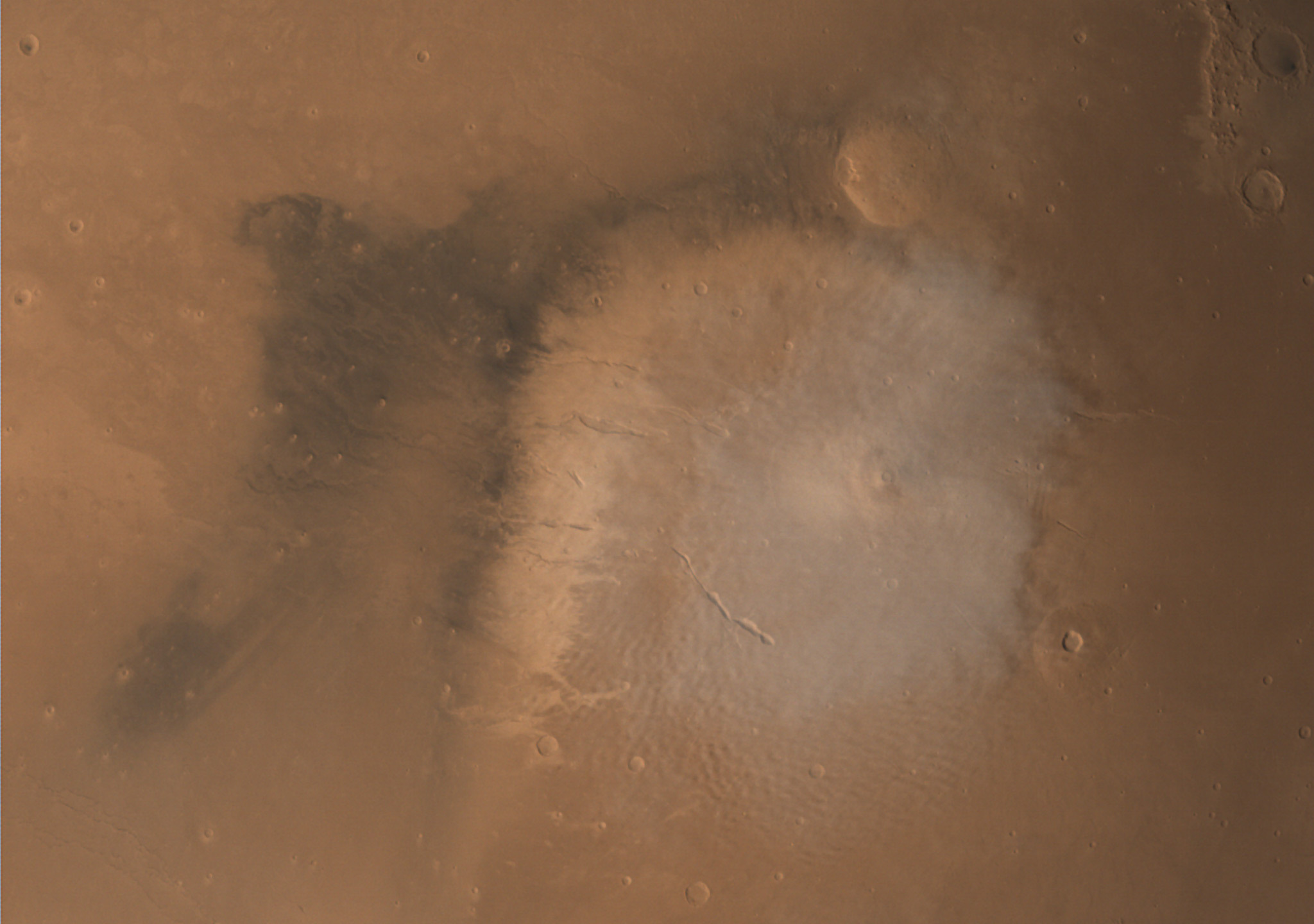
ISRO’s Mars Orbiter Mission captured this view of one of Mars’ huge volcanoes on April 25, 2016. The image covers an area about 2000 kilometers wide. Evening clouds have formed over the highstanding volcano. Credit: ISRO / ISSDC / Emily Lakdawalla




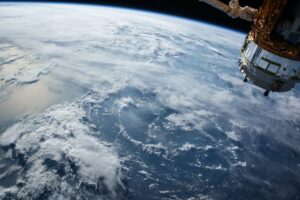

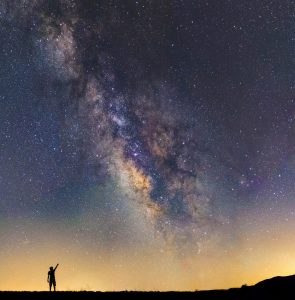
Thank you for your comment! It will be visible on the site after moderation.